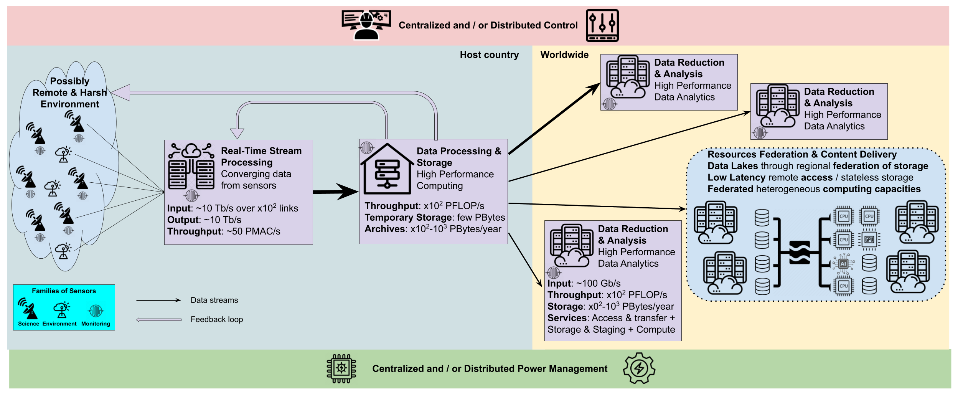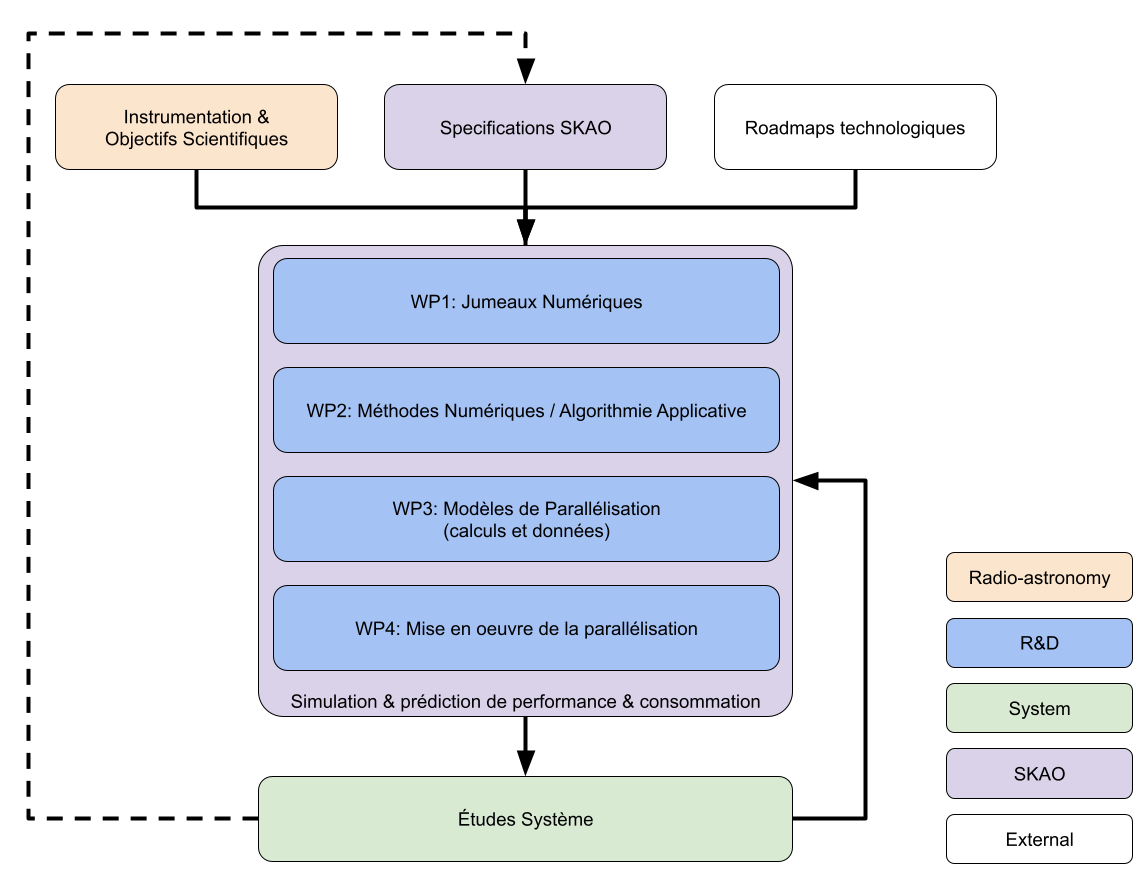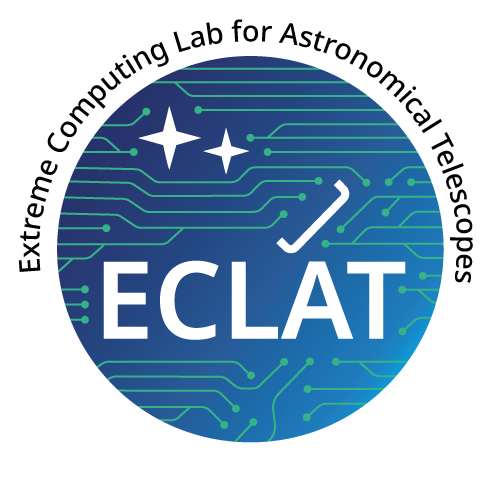Research & development
This strategic area covers innovations in algorithms, emerging technologies and artificial intelligence (AI) to push back current limits, optimise costs and maximise energy efficiency. It also serves as a bridge to other disciplines and applications in High-Performance Computing (HPC) and High-Performance Data Analytics (HPDA) through external collaborations, in particular with international partners.
An optimised processing chain for SKAO
The SKA observatory processing chain is a complex ecosystem, from the scientific sensors on the left of the diagram to the post-processing and data reduction resources on the right. It highlights the technological and architectural challenges to tackle in the short term to build this cutting-edge instrument.

The SDP subsystem plays a central role in this chain, identified as ‘Data Processing & Storage’ under the ‘High-Performance Computing’ label. Although this overview does not detail the specific hardware and software components, it does provide an overview of the main features and associated challenges.
Based on the high-level specifications of the SKA architecture, several strategic R&D areas have been defined.
Input/output (I/O) management
- Memory vs storage balance : Optimise the usage of memory and storage capabilities in the context of iterative algorithms,
- Pipelining strategies : Design an effective pipeline between the system input visibility ingestion stage and the calibration and imaging workflow..
Parallelization and distribution of tasks and data
- Parallelization strategies : Identify optimal large-grain (spectral, spatial, temporal dimensions) and fine-grain (in iterative processes) approaches,
- Asynchronous task execution strategy : Optimise performance by maximising the use of available resources, by modelling through a dependency graph and in the context of an iterative process where I/O management is a critical aspect.
- Study of temporal determinism : Study of temporal determinism and the reproducibility of execution times in the face of a constant flow of data and limited storage capacity.
Application algorithms
- Reduction in numerical precision and use of variable precision at different points in the workflow
- Optimisation : Study of the efficiency of different algorithmic options (e.g. convolutions via Fourier or linear algebra) according to the available libraries and possible approximations.
Portability / heterogeneity
- Generic programming : Use of a ‘general purpose’ programming model rather than a ‘domain specific’ model to ensure greater portability and the ability to run the workflow on a highly heterogeneous architecture.
- I/O integration : Better integration of I/O management strategy into programming models and use of rapid prototyping tools, while guaranteeing a level of performance consistent with the ability to carry out a system sizing study
Paradigm shift with AI
- Deep learning : Use of deep learning methods to carry out all or part of this processing chain (filtering / calibration / gridding / degridding / deconvolution / global synthesis)
- Study of reliability of these methods, question of ‘ground truth’ availability for the learning process, use of effective AI (e.g. impulse neural networks).
Core R&D activities

Research areas
Pushing the limits of innovation
Design of supercomputers
Research & development
Instrumentation for radio astronomy
Contributions to SKAO
Want to learn more?
Find out how you can contribute to innovation in astronomical research with ECLAT. Explore our pioneering projects and international collaborations to push back the frontiers of modern astronomy.
